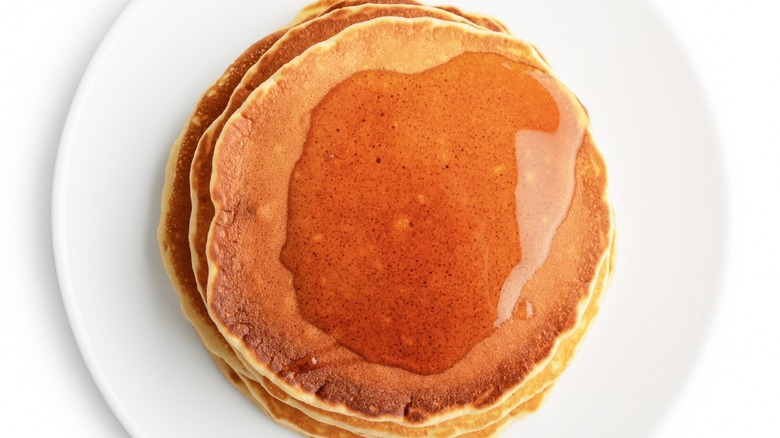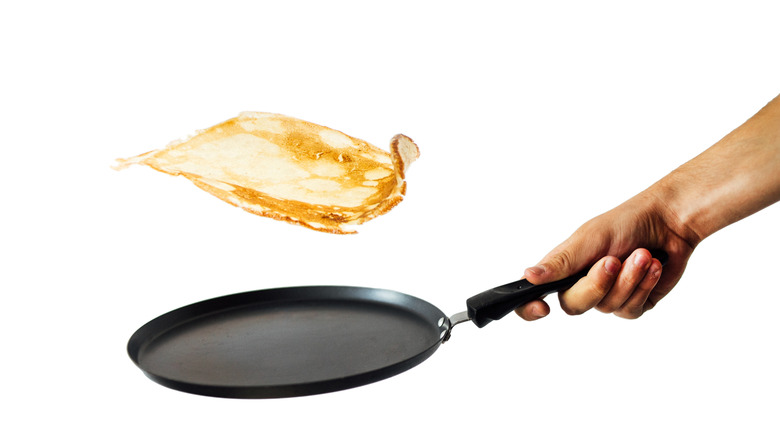What To Do When Your Pancakes Are Flat
Buttermilk pancakes signify the weekend is here! These delicious hotcakes, flapjacks, and hoecakes have been around forever. Making pancakes from scratch requires only four pantry staples: flour, eggs, milk, and baking powder, fried in a bit of butter. There are hundreds of variations nowadays to satisfy every pancake connoisseur and dietary restriction. Some prefer the processed, boxed mixes that only require water, like Pearl Milling Company, formerly Aunt Jemima, which are very popular. Others fall somewhere in the middle, making "semi-homemade" pancakes, doctoring-up pancake mixes. Upgrading processed food is a recent trend, from baking cakes to making mac 'n cheese.
In the United States, pancakes are usually topped with maple syrup, pure or processed. As early as 1845, "The Housekeeper's Assistant" referenced people putting maple syrup on their pancakes. The sap is tapped from maple trees in early spring, mainly from Canada and states with cold winters like in the Northeast. The sap is then boiled down into syrup. In other countries, pancakes are topped with different ingredients. Russians top their blinis with sour cream and caviar, while French crêpes can be filled with hazelnut spread or sautéed in orange liquor and caramelized sugar, like Crêpes Suzette.
As simple as making pancakes from scratch can be, there are easy mistakes to make, especially if you are cooking before you've had enough coffee. We are here to fix any issues, so grab your favorite pancake recipe, wash the strawberries, whip the cream and let's start flipping!
How to make your pancakes fluffy
The perfect pancakes are fluffy in the middle, golden brown with crispy edges, and ideally the size of a dinner plate. If flat pancakes are your problem, there may be issues with your batter. For starters, adding too much liquid will create flat pancakes. To fix this, add a little flour to the batter and gently mix it. Avoid this problem in the future by weighing the flour in your recipe. If you don't have a scale, aerate the flour, spoon it into the proper measuring cup until full, then level the cup. This will result in less flour in your recipe than the familiar "scoop and level" technique we've used for generations.
If additional flour doesn't fix it, your baking powder might have gone bad. Occasional bakers may have baking powder years old when it has a shelf life of six months to a year. The chemical compound of baking soda, cream of tartar, and cornstarch is sensitive to moisture too. To check if your baking powder is still active, add warm water to a spoonful of baking soda and watch for bubbles and fizz. If there isn't a reaction, throw it out.
That should fix the batter, but avoid pressing the pancakes down in the pan while frying. It removes the air from the batter, creating dense, flat, tough pancakes. No need to wait for Sunday morning to enjoy pancakes. They make a special treat for dinner, too. Snickerdoodle pancakes, anyone?

